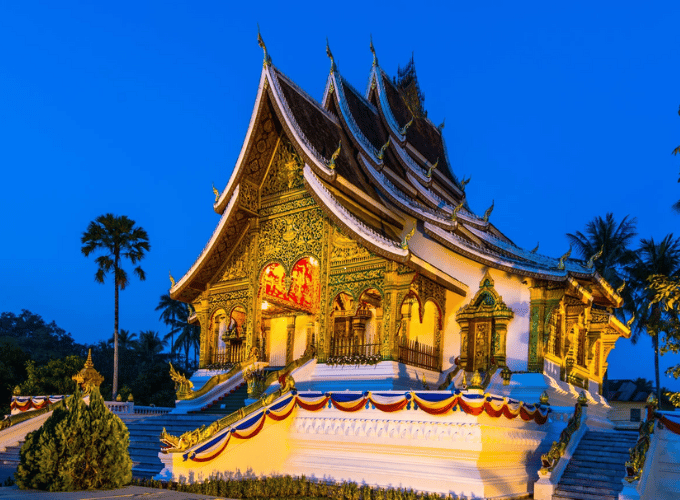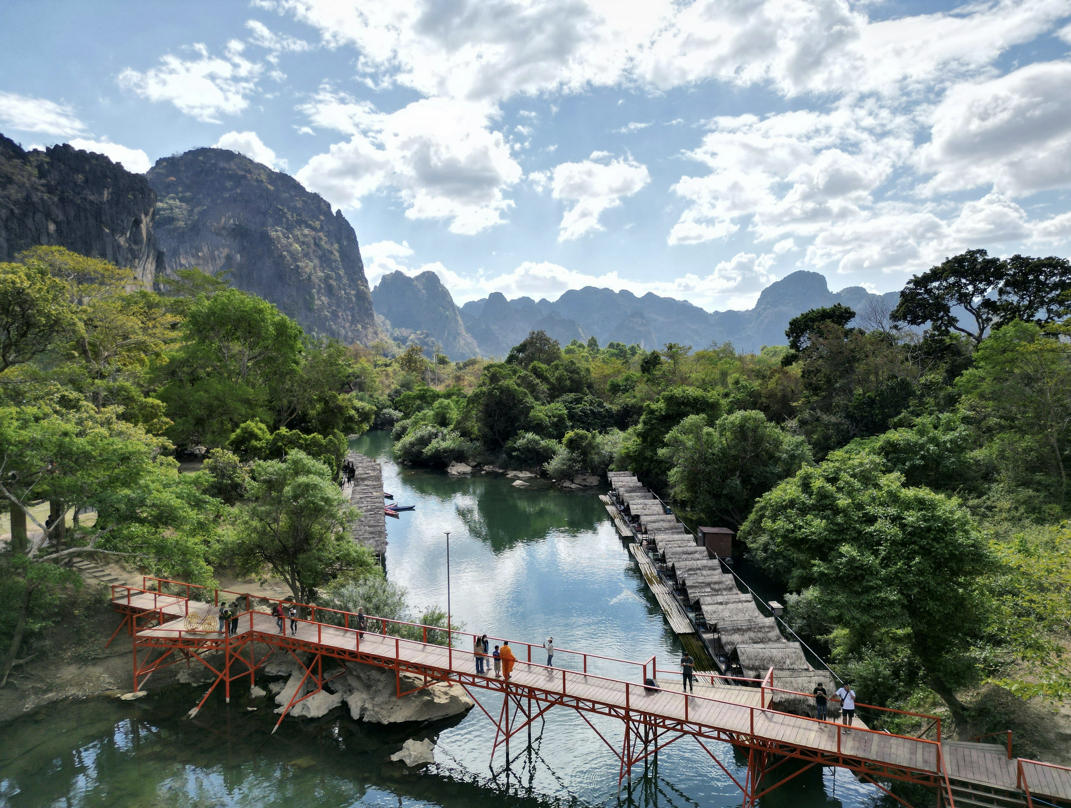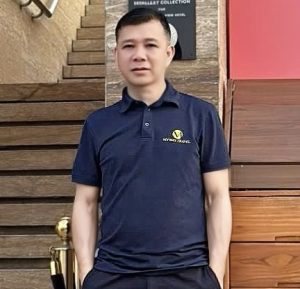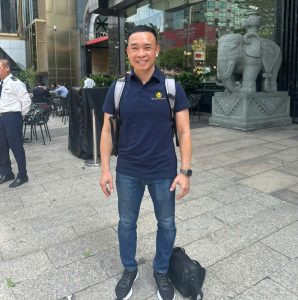Laos – Getting to know Luang Prabang
If you have a stereotypical image of South East Asia in your mind there’s a fair chance it’ll be perfectly realised in Luang Prabang. Saffron-robed monks on route to alms giving, gleaming temples, colonial influences and, of course, charming and graceful people. They all play their role in making this small UNESCO World Heritage Listed city such an enduring delight – but they’re merely the start.
Luang Prabang is a small city, easily explored by foot or bike. Whether you want to immerse yourself in its uniquely chilled atmosphere or wish to use it as a base from which to explore hidden corners of the county, Luang Prabang is a great centrepiece of any holiday to Laos.
Aside from providing the perfect hub from which to uncover more remote areas, the city is a wonderful blend of tradition mixed with key sites to explore, some fabulous accommodation and plenty of lovely restaurants, cafes and bars in which to merely sit back and watch local life unfold.
There remains an air of romanticism about Luang Prabang, making it a perfect spot for honeymooners as much as it is for those with a taste for some light adventure – and we’re also pretty confident there’s much here to delight families.
It’s the old part of the city to which you’ll be drawn, whether that’s exploring temples and former Royal palaces, taking in mesmerising views across and beyond the Mekong and Nam Khan rivers, or setting the alarm early for the daily alms giving to local monks – and we know the very best spots.
What to do in Luang Prabang
The morning alms giving is a must – and our local representatives will help you experience this daily ritual in more authentic spots far away from the tourist throng. Luang Prabang’s history is inextricably linked with that of Laos, and can be explored by visiting important sites such as the Pak Ou Caves, the Kuang Si Waterfalls, Wat Mai Suwannaphumaham, Wat Xieng Thong and the former Royal Palace. A trip to the top of Mount Pho Si – best done in the company of one of our guides, who’ll pick the best spots and throw in plenty of local knowledge.
Beyond the city
Under an hour outside Luang Prabang, you’ll discover one of the SA team’s favourite spots; the Living Lands Organic Farm. A community enterprise, where you will spend a fun and informal morning with a local farmer-cum-guide learning about each step of the rice cultivation process, and try your hand at the traditional techniques that have been used for centuries. The morning concludes with a rice tasting session, by which time you will have a much greater appreciation of the work and effort that goes into a simple bowl of rice!
If time allows, we recommend Nong Khiaw. Three hours by road, it’s a town boasting a magnificent setting on the Nam Ou River where tourists remain something of rarity and the wider area affords opportunities for some wonderful light trekking. For an authentic experience and one with a sound social responsibility message, visit one of the projects around Luang Prabang providing books to local schools to help educate young Laotians.
This work is not only vitally important it makes for day that will truly last in the memory. Spend the evening at a Sin Dat. These communal barbecues are not only great fun, you may well be the only westerner sipping a Beer Lao and preparing your dinner on table top charcoal cookers.
Three hours from Luang Prabang, Vang Vieng has grown considerably in recent years but it’s also an area in which you can cycle or kayak to a backdrop of stunning limestone karst scenery, stopping off at a weaving village and taking a refreshing dip in the crystal clear waters of the ‘blue lagoon’.
According to UNESCO…
Luang Prabang is ‘an outstanding example of the fusion of traditional architecture and Lao urban structures’
Temple etiquette
Remember that, although the Laos are incredibly patient, there is some temple etiquette to follow. Remove your shoes inside the buildings, avoid baring your legs or shoulders, try not to point your feet at the altar and – if you’re a woman – don’t tempt the monks! Ladies shouldn’t really touch the monks at all – if you want to hand them something, place it on a nearby table.
What wat?
An important spiritual city for centuries, Luang Prabang has seen the construction of no less than 66 temples in its lifetime, and despite numerous wars, 32 are left standing today.
The most impressive is generally considered to be Wat Xieng Thong (‘Golden Tree’), built in the classic Luang Prabang style of architecture, with low drooping roofs and incredible naga carvings. An ancient one-of-a-kind Buddha statue has reclined in its “wiharn” since the temple was first built, back in the mid-16th century (in fact it has left once, for an exhibition in Paris). Also notable is the shining ‘tree of life’ mosaic outside the chapel, inlaid into its red exterior wall.
Phou Si, topped with a gold-roofed stupa, is the hill just below the river, next to Sisavangvong Road. It’s a great place to start looking around; you’ll get an amazing view over the city as you set out, and many shrines along either of the hill’s two paths. Don’t miss 14th century Wat Pra Buddhabaht, with its traditional Buddha footprint grotto, on the way down.
Several large temples are situated around Phou Si’s base. Wat Mai Suwannaphumaham (‘New Monastery’), is only a century old, and has steep tiered red roofs, with a stunning gold interior. Nearby Wat Visoun Narath (or Wisunalat), is also known as Makmo, or watermelon, because of its domed roof. Surrounded by trees, it’s not the most highly decorated wat in the city, but its crumbling old stone is beautiful nonetheless.
Wats Aham, That Luang, Manolom and Xieng Muan are all particurlarly delightful, and well worth a look during your stay in Luang Prabang.
Whilst many of the original wats have survived the years, just as many are not entirely original, having been rebuilt or restored.
Speak to someone who's been there

Laos ⟩ Pakbeng
Laos ⟩ Pha That Luang
Laos ⟩ Tham Jang
Laos ⟩ Tham Xang
Laos ⟩ Wat Sisaket
Laos ⟩ Hongsa
Laos ⟩ Xieng Khouang
Laos ⟩ Wat Phou
Laos ⟩ Vientiane
Laos ⟩ Vang Vieng
Laos ⟩ Phongsali
Laos ⟩ Pakse








